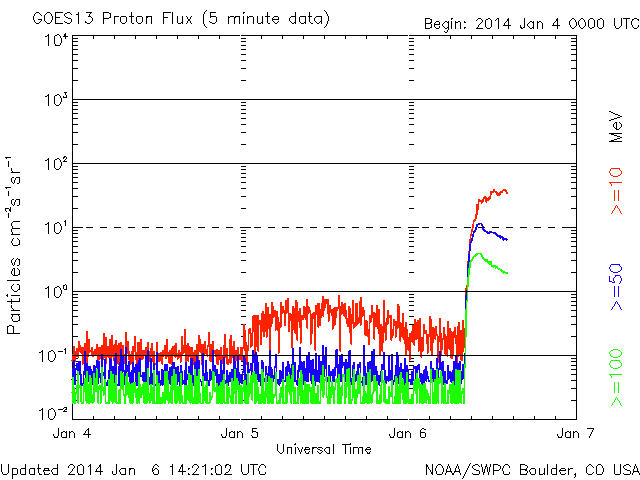An update provided by the Space Weather team at ESA’s Space Situational Awareness (SSA) programme office, with inputs from several of the spacecraft operations managers here at ESOC.

GOES 5-minute averaged integral proton flux (protons/cm2-s-sr) as measured by the SWPC primary GOES satellite. Live updates via https://www.swpc.noaa.gov/rt_plots/pro_3d.html Credit: NOAA
We’re currently experiencing an S1-level solar energetic particle (SEP) event. Starting at 10:15CET today, radiation detectors on board spacecraft in geostationary orbit have been showing increased levels of energetic protons; space weather forecasters are currently working to establish the origin of the event based on continuing solar observations. An S1 event is considered small and will not usually significantly hamper spacecraft operations.
Flight control teams for several ESA missions including Venus Express, Integral and Gaia at ESOC are monitoring radiation levels carefully. Integral has switched instruments off as a precaution. No permanent effect is expected.

Discussion: no comments